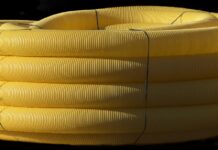
Heavy equipment is commonly found on construction sites, as these machines simplify projects. The size of the project and the budget play a role in which pieces are found on a job site. What are some machines found on most job sites today?
Excavators
Diggers, power shovels, or excavators are commonly seen on construction sites. They move the earth to prepare the surface for a project. Most excavators come with digging bucks and other attachments, ride on wheels or tracks, and feature a rotating cab and long boom. Excavators can remove trees and brush, dredge a river, demolish a structure, and drill a shaft. They can also remove snow, handle materials, and dig a foundation, making them a versatile tool. Manufacturers offer different sizes and configurations so every construction company can find a suitable machine. Look into a compact excavator rental to learn what this machine can do. Kubota is one of the top brands widely recognized for its high-quality equipment, offering machines built for a variety of tasks. At Kubota dealerships, you’ll find models that cater to projects of any scale
Compactors
Compactors do as the name suggests; they compact soil or another material. The compactor used for a project depends on the material being handled. A construction crew will use a smooth compactor when working with soil, crushed rocks, clay, sand, and gravel. A sheep-foot roller is needed for deep compaction, while the crew will use a pneumatic roller when working with fine silts or deep soil layers. Static compactors flatten rough surfaces, and vibratory compactors compact asphalt, concrete, soil, and gravel. The crew must consider all options to determine which compactor to use and when.
Trenchers
Trenchers are heavy equipment that make trenches in the soil. The crew uses this machine to create a trench for pipes, cables, drainage, and other tasks. Workers must choose between a chain trencher and a wheeled trencher. Chain trenchers come with a fixed long arm and a digging chain. Wheeled trenches, in contrast, have a metal wheel fitted with digging teeth. The wheeled version works best when excavating hard soil layers. Construction companies may choose between tracked and wheeled trenches.
Wheel Loaders
Materials often need to be moved around job sites, and a wheel loader helps with this task. These machines handle countless materials, including asphalt, gravel, logs, and woodchips. The machine has a large bucket connected to a short moving arm. The crew can replace this bucket with other attachments as needed. Wheeled loaders remain the most popular option, but tracked versions are available for those areas where wheeled loaders won’t work.
Articulated Haulers
Articulated haulers are specialized dump trucks. They are more maneuverable and can transport materials over rough terrain before taking to public roads. The power unit remains a permanent fixture, and the equipment has a joint between the cab and dump body. This joint allows the cab and dump body to pivot through a process known as articulated steering. This steering is unlike the rack-and-pinion steering found on conventional dump trucks. Articulated haulers feature hydraulic cylinders that allow the tractor to pivot relative to the trailer.
Pavers
Crews use asphalt pavers to lay asphalt on bridges, roads, and other surfaces. This machine comes with a feeding bucket, so there is no interruption in the asphalt supply. The bucket distributes the asphalt evenly on the surface and slightly compacts it. A roller then goes behind the paver to compact the material.
These are only a few heavy equipment machines that may be found on a construction site. Others include backhoes, bulldozers, graders, and scrapers. Cherry pickers, hoists, and tower cranes also sometimes come in handy. Each project differs, so the equipment needed to carry out the work also differs. The crew must determine which machines to use and why, as many machines serve multiple purposes. The crew’s experience helps determine this, as they know what works best in different situations.
Find a Home-Based Business to Start-Up >>> Hundreds of Business Listings.
















































